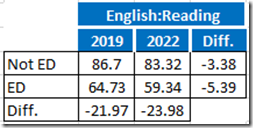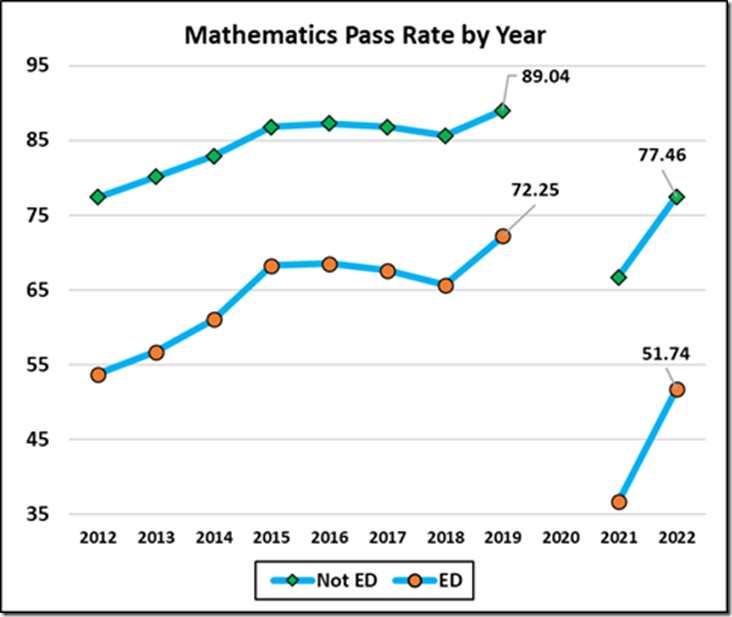by John Butcher
2020 was the first spring since 1998 without SOL tests in Virginia.
Then came 2021, when participation in the testing was voluntary. The VDOE press release said, “In a typical school year, participation in federally required tests is usually around 99%. In tested grades in 2021, 75.5% of students took the reading assessment, 78.7% took math, and 80% took science.
So, the ‘22 data are the first post-pandemic numbers with a claim to measuring anything beyond individual performance.
But first: as we have seen, economically disadvantaged students (“ED”) underperform their more affluent peers (“Not ED”) by around twenty points, depending on the test. This renders comparisons of the school and division and state averages meaningless because of the varying percentages of ED students. Fortunately, the VDOE database offers data for both groups. Hence the more complicated analyses below.
First, the state data for the reading tests. Note: the decreases in 2013 were the result of the adoption of new, tougher reading tests.
Comparing the ‘22 and ‘19 data, we get:
Caveat: “[T]he reading results for 2021-2022 understate the extent of learning loss — especially in the early elementary grades — given the adoption of less-rigorous proficiency standards by the Board of Education when introducing new reading tests during the 2020-2021 school year.”
Next, math, where the 2019 and 2022 pass rates both show the effects of the relaxed grading in 2019.
A later post will look at the division data.
John Butcher, a retired attorney, lives in Richmond. This column was republished with permission from Cranky’s Blog.





Leave a Reply
You must be logged in to post a comment.